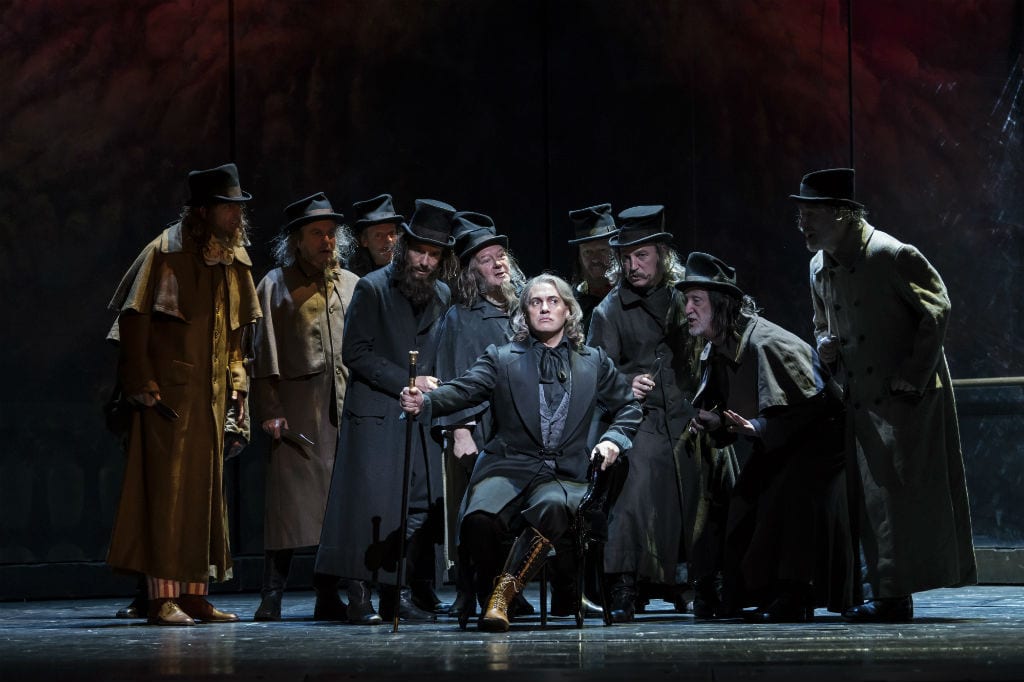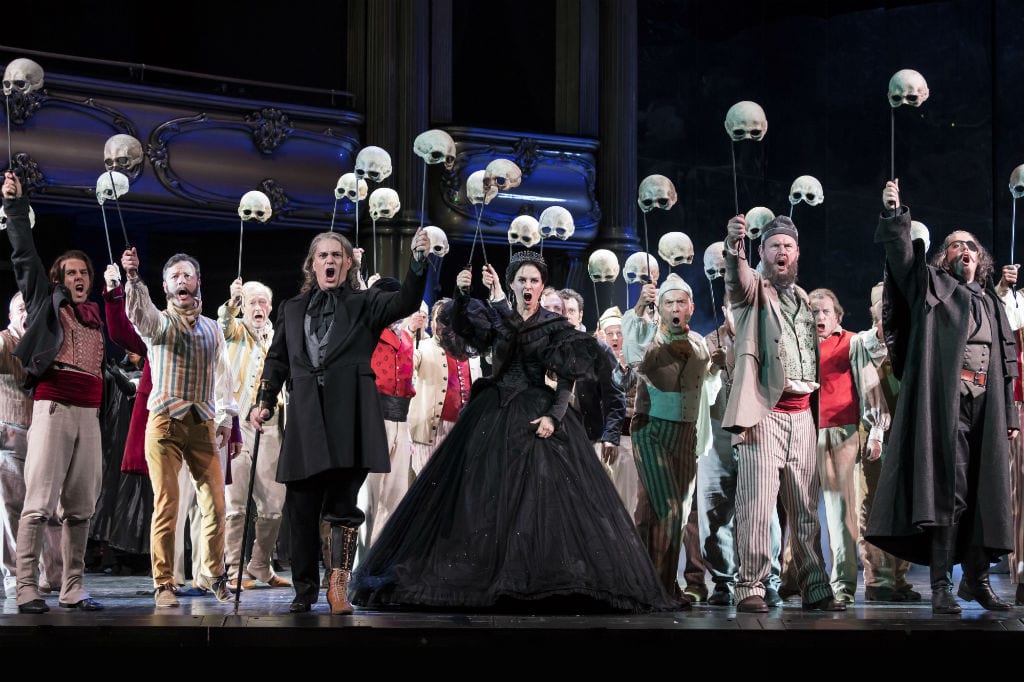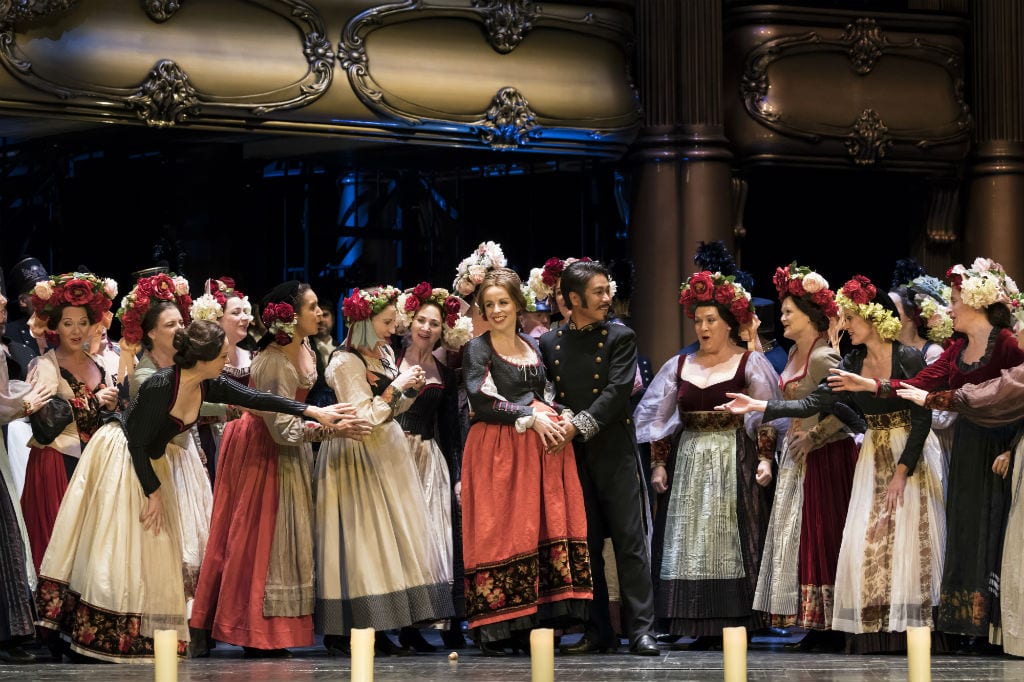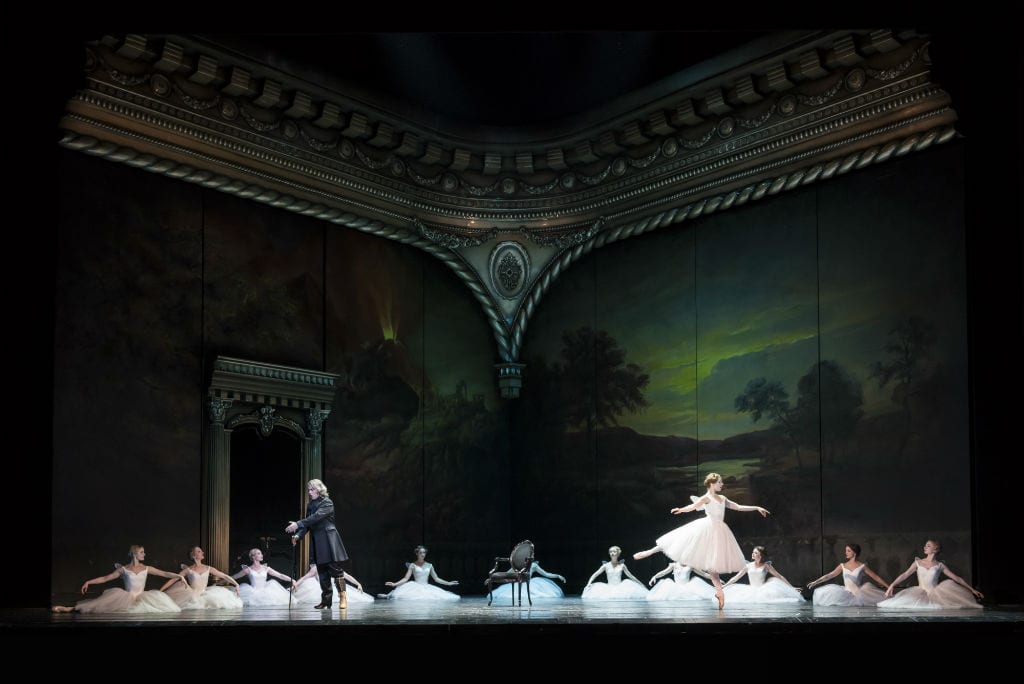The Les Vêpres Siciliennes or as it is known in English The Sicilian Vespers is the name given to the successful rebellion on the island of Sicily that broke out at Easter, 1282, against the rule of the French-born Charles I, d’Anjou, the King of Naples who also ruled and exploited Sicily. In a period of a few weeks thousands of French men, women and children were massacred in the Sicilian Vespers. It all began after a drunken French soldier molested a married Sicilian woman. Her husband killed him and the Sicilian crowd continued the attack on all the French in their midst. The Vesper bells rang out, calling all supporters to join. The rebellion began. This is the historical backdrop to this grand and musically brilliant opera.
Commissioned by Paris Opéra it was premiered in 1855 to a resounding success. Theatrically, Verdi complied with the French Opera House demands for a libretto in French (by Eugène Scribe), with five acts and a ballet for good measure. It has all the pomp that the tradition of grand opera requires.
The monumental overture thunders in the auditorium with gripping precision. With the Italian maestro, Maurizio Benini, in the pit, the Royal Opera House orchestra maintains the magic-like moments for the whole three hours and ten minutes duration of the performance.
Stephan Herheim’s 2013 production intriguingly and creatively incorporates the ballet scenes. To the sounds of the dramatic overture, the ballet and mime unfold the plot. Ballerinas in white classical tutus dominate the stage, a male figure lurking in the dimmed corner, later to be beaten by French soldiers, is none other than the revolt leader, Jean Procida (Erwin Schrott).
Herheim translates the historical rebellion on two parallel arenas – the historical reality, as per Scribe’s libretto and the political struggle in which art itself is the territory over which the struggle is raging. For that the designer, Philip Fürhofer, creates a grand overhanging balcony, mirroring the grand Opera House balconies. The oppressors, the French officers, are seated in their comfort zone, in the balcony’s boxes, clapping and laughing at the crowds that dominate the stage.
The driving plot is the passionate love that Henri (Bryan Hymel) has for the Duchess Hélèn (Malin Byström) whose brother, the Duke Friedrich, was murdered by the French. Henri swears to avenge the murder of Helen’s brother to gain her love, to discover that the cruel governor Montfort is his father. The dilemma of loyalty erupts in the face of wielding swords.
The ballet in parts overburdens the plot and seems superfluous. The chorus is superb throughout the performance. Erwin Schrott’s nationalist Procida, convincingly assumes the rebellion leader, albeit the French lady sitting next to me, indicated that his pronunciation, like that of Malin Byström is ‘awful’. Malin Byström’s performance is adequate but not inspiring. Of the four main singers, the American tenor Bryan Hymel’s Henri and the German baritone Michael Volle’s Monfort, give tour de force performance. There is intellectual, dramatic and emotional depth in each of this characters that Volle and Hymel successfully manage to bring to the forefront.
This performance at the Royal Opera House offers an excellent evening in which the four hours seemed to fly.







